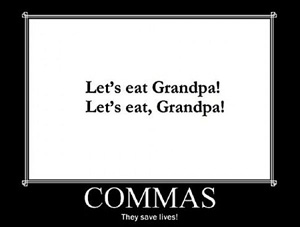[This is the latest installment from Tessa, our wonderful intern. If you like this one, check out her other posts.]

I can’t hide it. I’m kind of a grammar nerd. Which is why I got excited when I found out today is National Grammar Day.
It would be easy for me to use the opportunity to spout some grammar rules at you. I could tell you why that comma you just typed should be erased, ask you to change your “affect” to an “effect”, or remind you that the period should go inside the quotation mark. In fact, I would have a lot of fun doing that. Because for some reason, grammar rules are the only type of rules I enjoy following. Good grammar brings order into my often-messy life.
I understand that most people don’t get this same joy from punctuation, capitalization and word choice. And they certainly don’t use it as a method for staying sane in a disorganized world. (I’m sure there are much healthier methods.)
The point of this post is to say, somewhat reluctantly, that it’s okay not to get crazy about grammar rules. Of course you want your writing to be understandable, to flow well, and not to be full of noticeable errors. But with all things in life, you need to have a balance. If you are spending a substantial amount of time every time you write agonizing about the placement of each comma, take a step back. The most important thing is that your message is clearly received by your audience. And your grammar doesn’t have to be absolutely perfect for that to happen. (Notice how I started that last sentence with a conjunction? Grammar police would say “no!” to that…)
That being said, I’m not going to totally let you off the hook. You shouldn’t be making rookie mistakes such as misspelling common words or constructing sentences that are as long as this paragraph. If you find grammar to be a weak point in your writing, educate yourself on the things that keep tripping you up. Visit Grammar Girl often and learn the basics. You may even find a willing co-worker that would get excited to edit your work sometimes. I know because that was me in my last position. I somehow managed to manipulate “official proofreader” into my job description. Even if you don’t have a grammar enthusiast in your office, it always helps to have a second set of eyes look over your work whenever possible.
Let’s each use this day to reflect on what gets us excited about writing. For me, it’s taking complex ideas and simplifying them into short, easy-to-read sentences. What is it for you? Maybe it’s seeing your name in print on a final product. How about the people you are reaching with your message? Post your thoughts in the comments section of this post.



 A few weeks ago,
A few weeks ago,  Last week,
Last week,